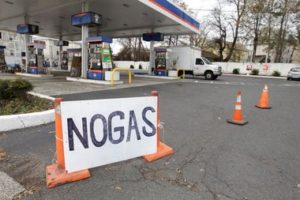 Cash-hoarding, homebound consumers piled up lots of savings over the last year, government stimulus payments added more (for some), and now — according to surveys and the economic data coming in — they’re in a mood to spend it.
Cash-hoarding, homebound consumers piled up lots of savings over the last year, government stimulus payments added more (for some), and now — according to surveys and the economic data coming in — they’re in a mood to spend it.
Bam. Forward motion, hit wall.
Home prices (if you could find one to buy) soared throughout the pandemic, fueled by a severe shortage of inventory (people didn’t want to move during the lockdown phase, and now they’re afraid if they sell they’ll be stuck without a home to move to). Food prices followed, in part driven up by grocery retailers’ pandemic-related costs (protective barriers and equipment, locally mandated hazard-pay for workers in some jurisdictions). But there was not general, broad-based inflation, beyond what already existed (which was low).
Until now. Consumer prices are rising across the board. The problem is simply this: Supply constraints (from curtailed production, reduced workforces, shipping bottlenecks, disrupted supply chains, etc.) and a demand spike (from pent-up demand and, now, a consumer spending binge) are occurring at the same time. Less supply + more demand = higher prices; Econ 101.
Bam. Demand hits impenetrable wall.
But that’s not all. Consumers also have to contend with shortages. Household appliances have been in short supply for months; you can’t buy a fridge, dishwasher, or microwave right now, at least not without waiting up to several months for it. But now the shortages are spreading to new cars (whose production is being curtailed by a global chip shortage, so expect to pay full sticker price), lumber (which has tripled in price), gas (because of a shortage of delivery drivers), and even swimming pool chlorine.
All of this will work itself out over time, but things are nowhere near being back to pre-pandemic normal, and won’t be for a long time.